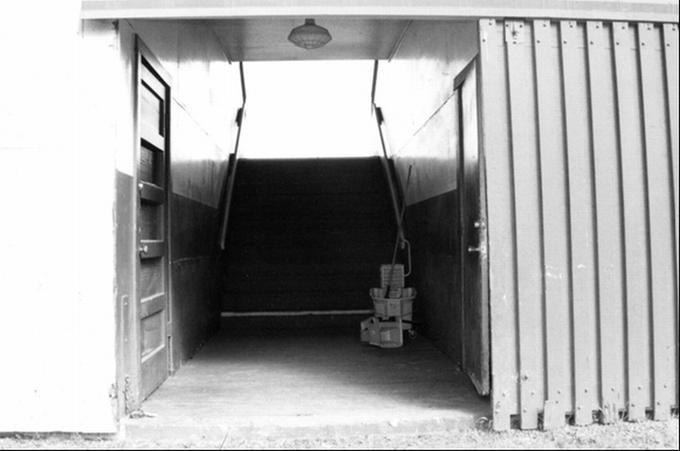Eugene Civic Stadium (Eugene, Oregon)
- Title
-
Eugene Civic Stadium (Eugene, Oregon)
- LC Subject
-
Architecture, American
Architecture--United States
- Alternative
-
Civic Stadium (Eugene, Oregon)
- Creator
-
Smith, Graham B.
West Coast Lumberman's Association
- Photographer
-
Perrin, Natalie K.
- Creator Display
-
Graham Braden Smith (1896-1957)
West Coast Lumberman's Association (builder/contractor)
- Description
-
National Register of Historic Places (Listed, 2008)
- View
-
exterior: southern-most entrance on the west facade, looking east.
- Provenance
-
University of Oregon Libraries
- Temporal
-
1930-1939
- Work Type
-
architecture (object genre)
built works
views (visual works)
exterior views
recreation buildings
sports buildings
coliseums (stadiums)
open spaces
athletic fields
- Latitude
-
44.037059
- Longitude
-
-123.092007
- Location
-
Eugene >> Lane County >> Oregon >> United States
Lane County >> Oregon >> United States
Oregon >> United States
United States
- Street Address
-
2077 Willamette Street
- Date
-
1938/1938
- View Date
-
2007-05
- Identifier
-
OR_LaneCounty_EugeneCivicStadium_14.jpg
- Rights
-
In Copyright - Educational Use Permitted
- Type
-
Image
- Format
-
image/jpeg
- Set
-
Building Oregon
- Primary Set
-
Building Oregon
- Institution
-
University of Oregon
- Citation
-
National Register of Historic Places Registration Form
- Note
-
Eugene Civic Stadium, popularly known as “Civic,” is located at 2077 Willamette Street, in Eugene, Lane County, Oregon. Civic was dedicated on October 21, 1938, and hosted its first event on October 28, 1938, when the annual Eugene-Corvallis High School football skirmish was played on the original clay and sawdust field. Designed predominantly for football and baseball, the site has traditionally served as a multipurpose facility. Hosting everything from soccer to rodeo, the Eugene Civic Stadium continues to serve the community. as home to the Eugene Emeralds, a minor-league baseball team, as well as the current home for local soccer league practices. (Nomination, section 7, page. 1). The wooden grandstand is an L-shaped structure designed by local Eugene architect Graham Braden Smith. Smith attended the University of Oregon from 1915 until 1919, later working for John Hunzicker in 1925. He became a partner in the firm in 1927, as did Truman E. Phillips in 1929, forming the firm of Hunzicker, Smith & Phillips. This partnership was dissolved in 1931, and Smith practiced alone for the remainder of his career. Smith was a member of the American Institute of Architects and is also known for Nyssa School at Nyssa, Oregon (built 1950), and the Guard Publishing Company building in Eugene (built 1952).(Nomination, section 7, page 2). - Located in Lane County, Eugene Civic Stadium is the only known example of a Depression Era ballpark left in the state of Oregon. Eugene Civic Stadium was built in 1938 on the east side of Willamette Street in Eugene, between 20th and 22nd Avenues. Built as a cooperative between the Eugene Chamber of Commerce, Eugene Public School District No. 4, and the Works Progress Administration (WPA), Civic Stadium is significant to the development of the nation’s favorite pastime, and is one of the oldest extant ballparks in the United States. (Nomination, Section 8, page 1).
Graham Braden Smith was born in Noblesville, Indiana, on September 8, 1896. He attended the University of Oregon (1915-1919) and was a World War I veteran. Smith returned to Indiana to work for Bass, Knowlton & Graham (Indianapolis, 1920) and Donald Graham (1921). He came back to Eugene, Oregon, in 1925 to work with John Hunzicker and partnered with that architect to form Hunzicker and Smith in 1927. Truman E. Phillips became a partner of the firm in 1929, forming Hunzicker, Smith & Phillips. From 1931 to 1956, Smith practiced alone.
